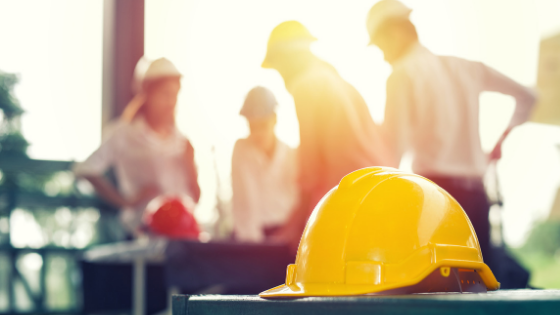Workplace safety: there’s no argument anywhere that it’s not crucially important. Not all workplaces are alike, however; each work sector has different dangers and safety requirements. One line of work that has perhaps some of the most stringent safety requirements is the construction sector; due to the very nature of what the job entails, safety requirements for construction crews are often far and above any other.
The increased need for safety in construction means that more attention must be paid to the kinds of work safety guidelines that are needed for this line of work. In the hopes of making the topic easier to process, understand, and implement, here is some invaluable background information on some of the most common of those construction work safety guidelines there are.
Personal Protective Equipment
One of the most important safety aspects of any construction site is to ensure that workers are issued proper personal protective equipment (PPE) to safeguard themselves against occupational injury. However, the idea of construction site PPE goes much farther than just a sturdy hard-hat to protect workers from tools and debris dropped from height; there is a myriad of other dangers that construction workers face.
Construction sites are often high-volume environments, and prolonged exposure to high volumes of sound can lead to hearing loss. This makes providing workers with earplugs or noise-canceling headphones important. Likewise, high-visibility gear such as reflective work vests is also a necessity, especially if your worksite involves road traffic or heavy machinery moving material. Finally, the wearing of other PPE, like steel-toed shoes, eye protection, or work gloves, needs to be enforced as well, either through providing PPE on the job or requiring workers to provide their own.
Environmental Safety Concerns
One of the other most important facets of construction work safety is environmental. Much construction work is done outside, and that means the possibility that workers will be exposed to the elements. Employees need to be provided space to cool off periodically when working in hot summer conditions and warm up in cold winter conditions, as over-exposure to extreme temperatures can be dangerous to worker health.
Additionally, worksites need to be prepared against the damage that inclement weather can do. Hard rains can cause construction sites to flood if they have not been prepared with proper drainage; likewise, muddy conditions can cause workers to slip and fall – and construction vehicles and equipment to skid or slide. High winds can likewise cause construction equipment or materials to become unmoored, another potential source of accident and injury. This means that work sites need to be secured against the possibility of bad weather and everything it might bring.
The Dangers of Working at Height
Finally, many construction sites require employees to work at height. Whether it’s putting on the roof of a two-story residential home or it’s erecting the outside walls of a new high-rise's 45th floor, the dangers of working at height are the same: injuries caused by falling tools, construction debris, or from a worker slipping off a scaffold or platform.
Preventing employee falls from height is relatively simple; requiring the use of safety harnesses for all workers that are engaged in construction above a certain height. This can turn a slip or a trip from a deadly fall to a momentary inconvenience. To protect from falling debris or tools, keeping the lower levels off-limits to workers is one option, as is the use of safety netting to catch falling objects when cordoning off areas is impossible or inappropriate.
The Tip of the Construction Safety Iceberg
There are, of course, plenty of other workplace safety concerns when it comes to the construction industry. However, this guide is more than enough to get you started on your journey to making your construction sites as safe as they can be. Be diligent as you are careful and you’ll be well on your way to providing excellent construction site safety.
